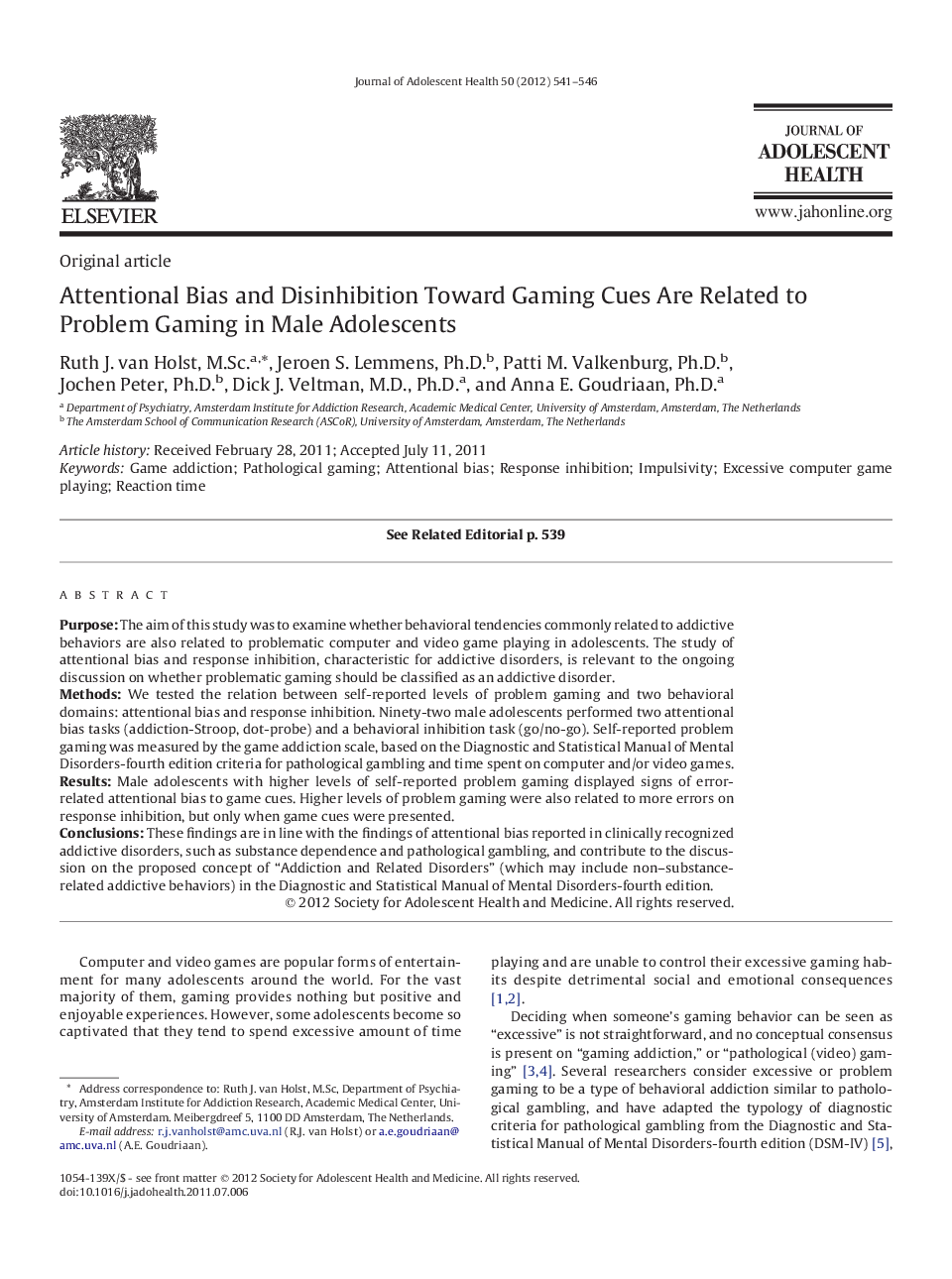| Article ID | Journal | Published Year | Pages | File Type |
|---|---|---|---|---|
| 1079450 | Journal of Adolescent Health | 2012 | 6 Pages |
PurposeThe aim of this study was to examine whether behavioral tendencies commonly related to addictive behaviors are also related to problematic computer and video game playing in adolescents. The study of attentional bias and response inhibition, characteristic for addictive disorders, is relevant to the ongoing discussion on whether problematic gaming should be classified as an addictive disorder.MethodsWe tested the relation between self-reported levels of problem gaming and two behavioral domains: attentional bias and response inhibition. Ninety-two male adolescents performed two attentional bias tasks (addiction-Stroop, dot-probe) and a behavioral inhibition task (go/no-go). Self-reported problem gaming was measured by the game addiction scale, based on the Diagnostic and Statistical Manual of Mental Disorders-fourth edition criteria for pathological gambling and time spent on computer and/or video games.ResultsMale adolescents with higher levels of self-reported problem gaming displayed signs of error-related attentional bias to game cues. Higher levels of problem gaming were also related to more errors on response inhibition, but only when game cues were presented.ConclusionsThese findings are in line with the findings of attentional bias reported in clinically recognized addictive disorders, such as substance dependence and pathological gambling, and contribute to the discussion on the proposed concept of “Addiction and Related Disorders” (which may include non–substance-related addictive behaviors) in the Diagnostic and Statistical Manual of Mental Disorders-fourth edition.
